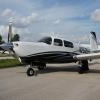What is the correct visual approach pattern?
-
Members Online
- ArtVandelay
- Flyler
- displayname
- dennis riz
- Joshua Blackh4t
- CCAS
- Patrick Horan
- PierreL
- Marc_B
- Pictreed
- TangoTango
- Slick Nick
- bigmo
- dzeleski
- exM20K
- T C
- eman1200
- jamesm
- ProtoFly
- EricJ
- Yetti
- Healthpilot
- Niko182
- hammdo
- neilpilot
- spaceman39a
- jamesyql
- varlajo
- N201MKTurbo
- 47U
- PT20J
- Skyland
- INA201
- PMcClure
- DXB
- 1980Mooney
- Jake@BevanAviation
- WilliamR
- MB65E
- rbmaze
- Larry
- Matthew P


Recommended Posts
Join the conversation
You can post now and register later. If you have an account, sign in now to post with your account.